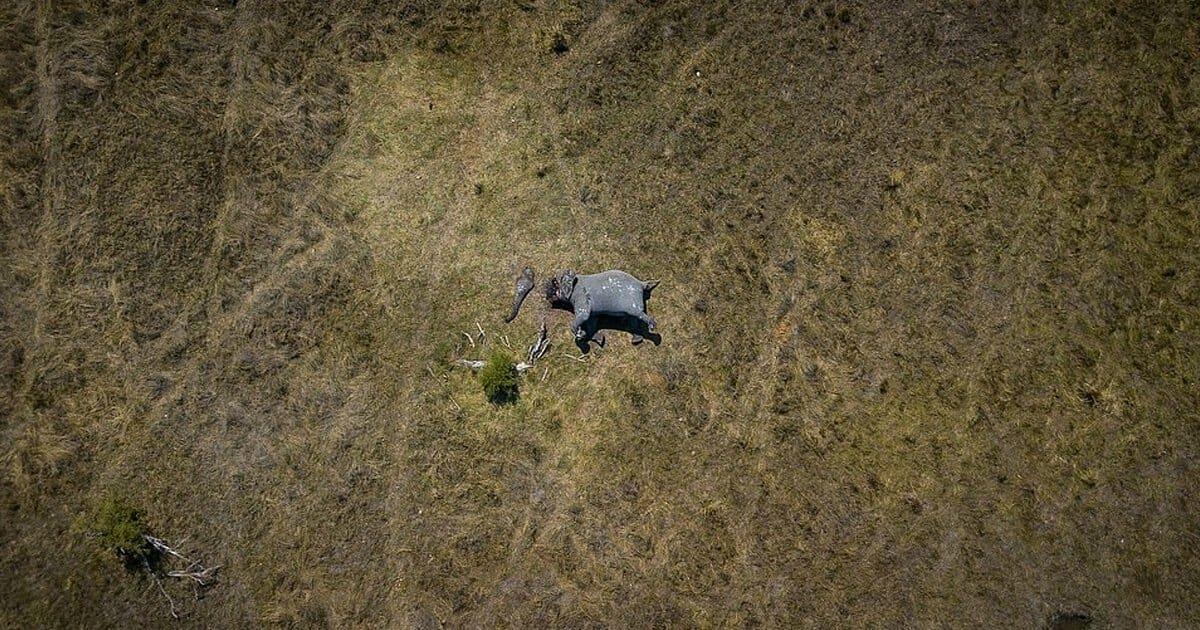With approximately 415,000 elephants left in Africa today, the future of these "largest existing land animals" is uncertain. This is due to corruption and greed in the poaching industry.
According to reports, it's believed that over 20,000 elephants are killed every year for their ivory tusks.
Though many countries, including the US and China, have banned the elephant ivory trade, poaching is still rampant. And the demand is being driven by the idea that Ivory is a status symbol.

Recently, a disturbing photo of a mutilated African elephant, with its severed trunk still next to it, has been unveiled. It captures the horrors and painful reality of ivory poaching in northern Botswana.
A South African journalist, Justin Sullivan, 28, used a drone to capture this devastating image caused by poaching. The picture shows an elephant's corpse after it was hacked by a chainsaw, severed trunk lying next to it, and the tusks are nowhere to be seen.
Sullivan's aerial shot, called "Disconnection," came to light after being nominated for the prestigious Andrei Stenin International Press Photo Contest.
Sullivan said, according to the UK's The Sun:
"This specific elephant was slaughtered in an extremely inhumane manner."
"The photo represents just how isolated and disconnected not only the elephant was in that moment, but how disconnected we are from the situation."

Poaching in Botswana has increased dramatically over recent years. It's estimated that the number of elephant corpses in the northern parts of the country soared by a staggering 593 percent between 2014 and 2018.
Sullivan was filming in Botswana for a private company when he overheard a ranger group talking about the slaughtered elephant. He told reporters:
"They said an elephant had just been poached and I asked to be taken to the site. On arrival, I used a drone to capture the image."
"The image is called 'Disconnection,' the perspective of the image gives context to the situation which you would never be able to see from the ground."
"The high angle looking top-down shows the isolation and highlights not only the physical disconnection of the animal but our disconnection from the situation."
Sullivan continued:
"People have obviously reacted with mixed feelings of anger and sadness, especially with the recent lift on the hunting ban in Botswana. Still, this photo has driven some constructive dialogue around how we can promote more sustainable elephant conversation and solve our current ecological crisis."
The image is so distressing that Save the Elephants and Wildlife Conservation Network has set up The Elephant Crisis Fund (ECF) to find solutions to end the ivory crisis.

Commenting on the photo, A spokesperson from the Sheldrick Wildlife Trust told UNILAD:
"It's a depressing image and one that highlights the reality that ivory poaching remains a serious threat to elephants across Africa, not solely in Northern Botswana."
"It should, however, be stressed that no date stamp has been provided by the drone operator for this image and it is important that the date of the footage be made public to ensure this is a highly recent image and not the release of older content."
"According to Elephants Without Borders (EWB), who operate on the ground in Botswana, there are clear indications (from 2018 surveys) as to an increase in ivory poaching in the Northern Area of Botswana."
Early this year, conservationists were left appalled after Botswana lifted the ban on elephant poaching. The country justified the decision, claiming that the animals had become uncontrollable in some areas.



